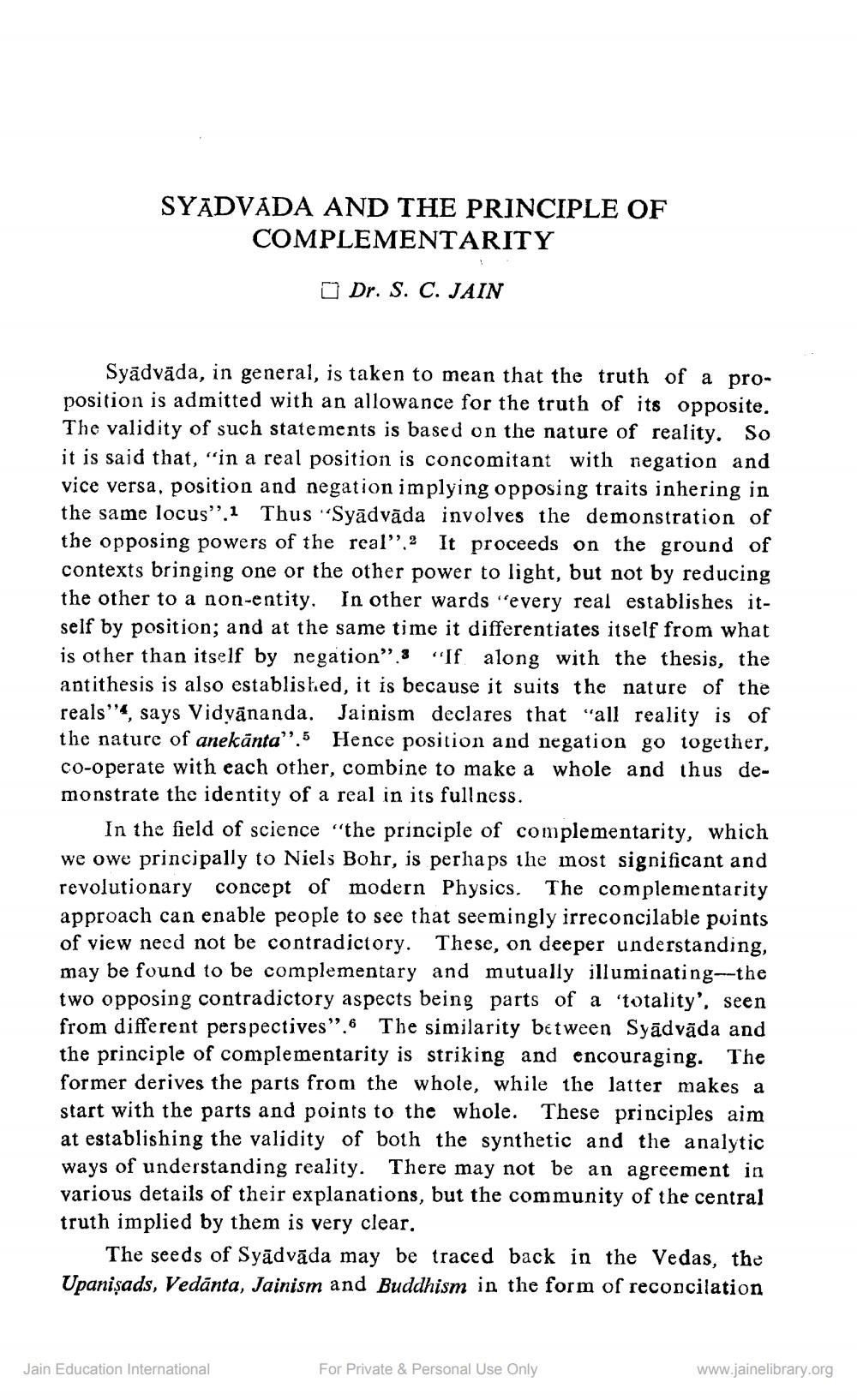________________
SYADVADA AND THE PRINCIPLE OF
COMPLEMENTARITY
Dr. S. C. JAIN
Syādväda, in general, is taken to mean that the truth of a proposition is admitted with an allowance for the truth of its opposite. The validity of such statements is based on the nature of reality. So it is said that, "in a real position is concomitant with negation and vice versa, position and negation implying opposing traits inhering in the same locus''.1 Thus Syādvāda involves the demonstration of the opposing powers of the real”? It proceeds on the ground of contexts bringing one or the other power to light, but not by reducing the other to a non-entity. In other wards "every real establishes itself by position; and at the same time it differentiates itself from what is other than itself by negation": "If along with the thesis, the antithesis is also established, it is because it suits the nature of the reals'', says Vidyānanda. Jainism declares that “all reality is of the nature of anekānta”.5 Hence position and negation go together, co-operate with each other, combine to make a whole and thus demonstrate the identity of a real in its fullness.
In the field of science "the principle of complementarity, which we owe principally to Niels Bohr, is perhaps the most significant and revolutionary concept of modern Physics. The complementarity approach can enable people to see that seemingly irreconcilable points of view need not be contradictory. These, on deeper understanding, may be found to be complementary and mutually illuminating--the two opposing contradictory aspects being parts of a 'totality', seen from different perspectives”.6 The similarity between Syādvāda and the principle of complementarity is striking and encouraging. The former derives the parts from the whole, while the latter makes a start with the parts and points to the whole. These principles aim at establishing the validity of both the synthetic and the analytic ways of understanding reality. There may not be an agreement in various details of their explanations, but the community of the central truth implied by them is very clear.
The seeds of Syādvāda may be traced back in the Vedas, the Upanișads, Vedānta, Jainism and Buddhism in the form of reconcilation
Jain Education International
For Private & Personal Use Only
www.jainelibrary.org




